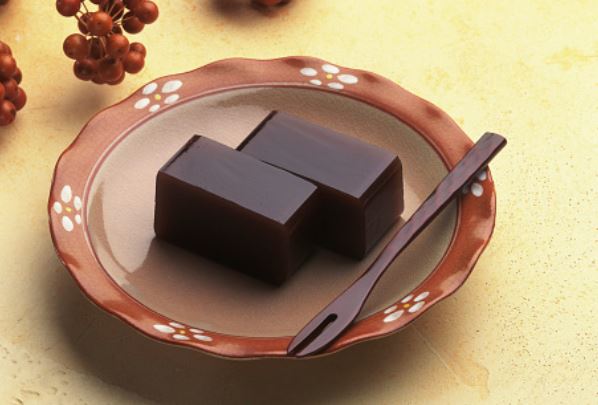
Yokan the Icon of Japanese-Style Confection Was Mutton Soup
Yokan (sweet bean jelly) well known as a Japanese-style confection that goes well with green tea was brought to Japan from China. At that time, however, yokan was not a confection. It was surprisingly said to be a soup.
According to Hiroyuki Yamagata, the author of “Tabemono Kanari Ii Hanashi (Pretty Good Stories about Food)” (published by Daiwa Shobo), yokan, as indicated by the characters yo (sheep) and kan or atsumono (broth), was originally a soup with a jellylike topping made from mutton.
When this was brought to Japan, the Japanese who did not have the custom at that time of eating meat used ingredients of vegetable origin, such as wheat flour, arrowroot starch, rice cake flour, adzuki bean starch and yam starch, instead of mutton to make the topping of the soup. It is said that this soup spread among the people of the upper class as one of their soup dishes.
There are many explanations regarding the arrival of yokan in Japan, but none of them is certain. According to one explanation, yokan had already arrived in Japan in the Heian period (794 to 1185).
The first mention of yokan in Japan appeared in “Teikin Orai” and “Hochokikigaki” written around the time from the Kamakura Period (1185 to 1333) to the Muromachi Period (1392 to 1573). However, these books describe yokan as a soup.
“Hochokikigaki” states that there are 48 ways of preparing the soup listing such names as yokan, chokan (wild boar soup) and ebikan (shrimp soup). It appears that the names were given depending on the shape of the topping, for example, yokan for the soup with a sheep-shaped topping or chokan for the soup with a wild boar-shaped topping.
The change from yokan from a soup to a confection is closely connected to the later development of the tea ceremony. When this yokan became to be used as refreshment in the tea ceremony, the jellylike topping made without using mutton attracted attention. This topping was then separated from the soup and steamed with sweetening added. Steamed yokan was thus born.
From around the end of the Kamakura Period, people became familiar with the steamed yokan. According to Yamagata, the kneaded yokan that we know of today went on sale as Fushimi Yokan in 1589 in Kyoto. As for Edo, the kneaded yokan made its appearance during the Kansei era (1789 to 1801).
The story goes that a person named Zentaro in Edo sold a kneaded yokan that became popular and quickly spread. From this time, the yokan became to point to the kneaded yokan.



0件のコメント